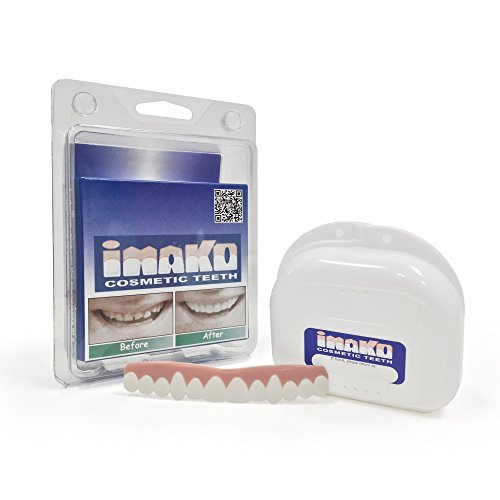Fake Teeth Options

The world of fake teeth, also known as dentures, has undergone significant transformations over the years. Gone are the days of ill-fitting, uncomfortable, and noticeably artificial teeth replacements. Today, individuals with missing teeth have a plethora of options to choose from, each designed to mimic the natural look and feel of real teeth. In this comprehensive guide, we will delve into the various types of fake teeth options available, their benefits, drawbacks, and what to expect from the dental implant process.
Understanding the Need for Fake Teeth
Before we dive into the various options, it’s essential to understand why fake teeth are necessary. Tooth loss can occur due to various reasons, including gum disease, tooth decay, injury, or genetics. Missing teeth can lead to a range of issues, from difficulty chewing and speaking to low self-esteem and confidence. Fake teeth can help restore the natural function and appearance of the mouth, enabling individuals to eat, speak, and smile with ease.
Types of Fake Teeth Options
Traditional Dentures: These are the most common type of fake teeth and are available in two forms: complete and partial. Complete dentures replace all teeth in the upper or lower jaw, while partial dentures fill gaps between existing teeth. Traditional dentures are removable and require regular cleaning and maintenance.
Implant-Supported Dentures: This option combines the stability of dental implants with the convenience of dentures. Implant-supported dentures are attached to implants surgically placed in the jawbone, providing a secure and stable fit.
Snap-in Dentures: Also known as overdentures, snap-in dentures are removable and attach to dental implants via snaps or clips. This option offers a more secure fit than traditional dentures and can help prevent gum irritation.
Fixed Dentures: As the name suggests, fixed dentures are non-removable and are attached to dental implants or natural teeth. This option provides the most natural look and feel, as well as the greatest stability and chewing power.
Temporary Dentures: Temporary or interim dentures are used during the healing process after tooth extraction or implant surgery. They help the mouth heal and provide a temporary solution until the final dentures are ready.
Comparing Fake Teeth Options
Each type of fake teeth option has its advantages and disadvantages. Traditional dentures are often the most affordable option but may require more maintenance and adjustment. Implant-supported dentures offer greater stability and comfort but require surgical implant placement. Snap-in dentures provide a balance between stability and removability, while fixed dentures offer the most natural look and feel but are often the most expensive option.
The Dental Implant Process
For those considering implant-supported or fixed dentures, understanding the dental implant process is crucial. The process typically involves the following steps:
- Initial Consultation: The dentist will assess the patient’s overall oral health, take impressions and X-rays, and discuss the best course of treatment.
- Implant Placement: The dentist will surgically place the dental implants in the jawbone, which can take several hours depending on the number of implants.
- Healing Process: The mouth will need time to heal, which can take several months. During this time, the dentist may provide temporary dentures.
- Abutment Placement: Once the implants have integrated with the bone, the dentist will attach an abutment to the implant, which will serve as the base for the denture.
- Denture Attachment: The final step is attaching the denture to the implant or abutment, which can be done in a single visit.
Conclusion
Fake teeth options have come a long way, offering individuals with missing teeth a range of choices to restore their natural smile and confidence. From traditional dentures to implant-supported and fixed dentures, each option has its benefits and drawbacks. By understanding the different types of fake teeth options and the dental implant process, individuals can make informed decisions about their oral health and choose the best solution for their unique needs.
What is the most comfortable type of fake teeth?
+Implant-supported dentures are often considered the most comfortable type of fake teeth, as they are securely attached to dental implants and do not put pressure on the gums.
How long do fake teeth last?
+The lifespan of fake teeth depends on the type and quality of the dentures, as well as the individual’s oral health and maintenance habits. On average, traditional dentures can last 5-7 years, while implant-supported dentures can last 10-20 years or more.
Can I eat normally with fake teeth?
+Yes, with modern fake teeth options, individuals can eat a wide range of foods, including crunchy and chewy textures. However, it’s essential to follow the dentist’s recommendations and avoid certain foods that can damage the dentures or implants.
